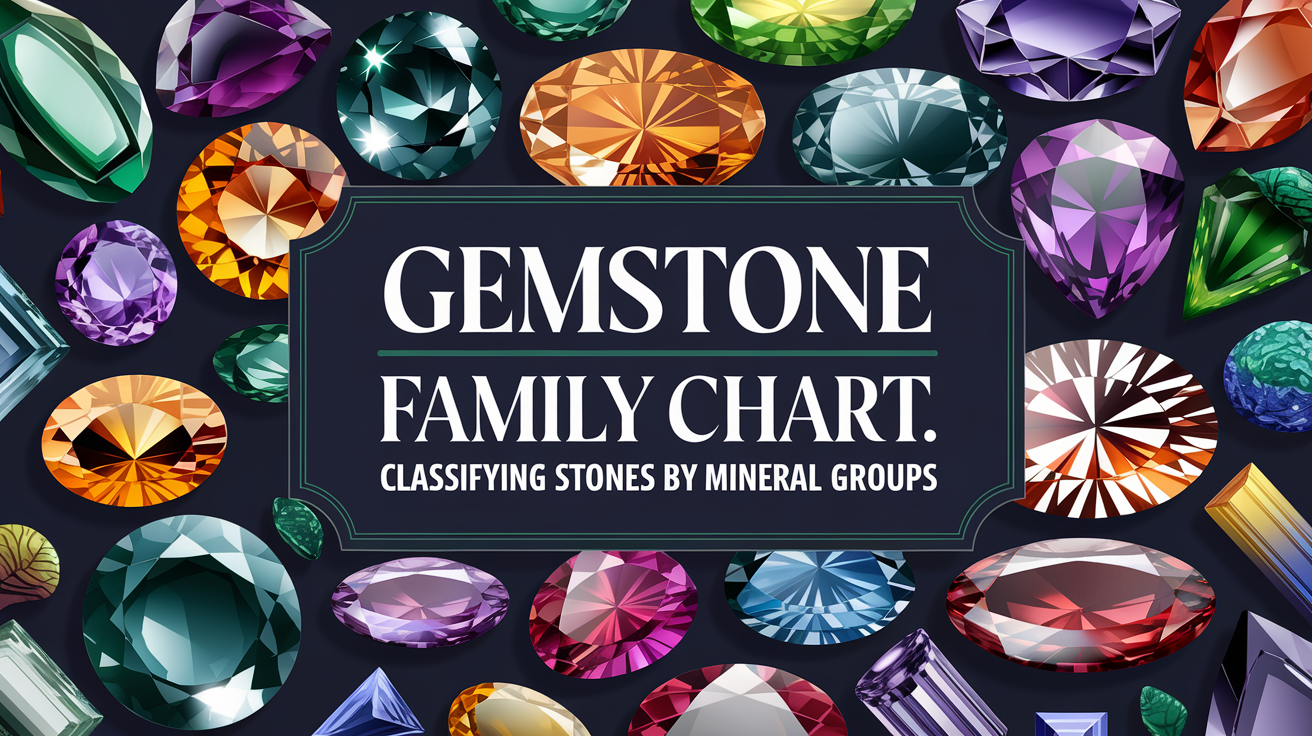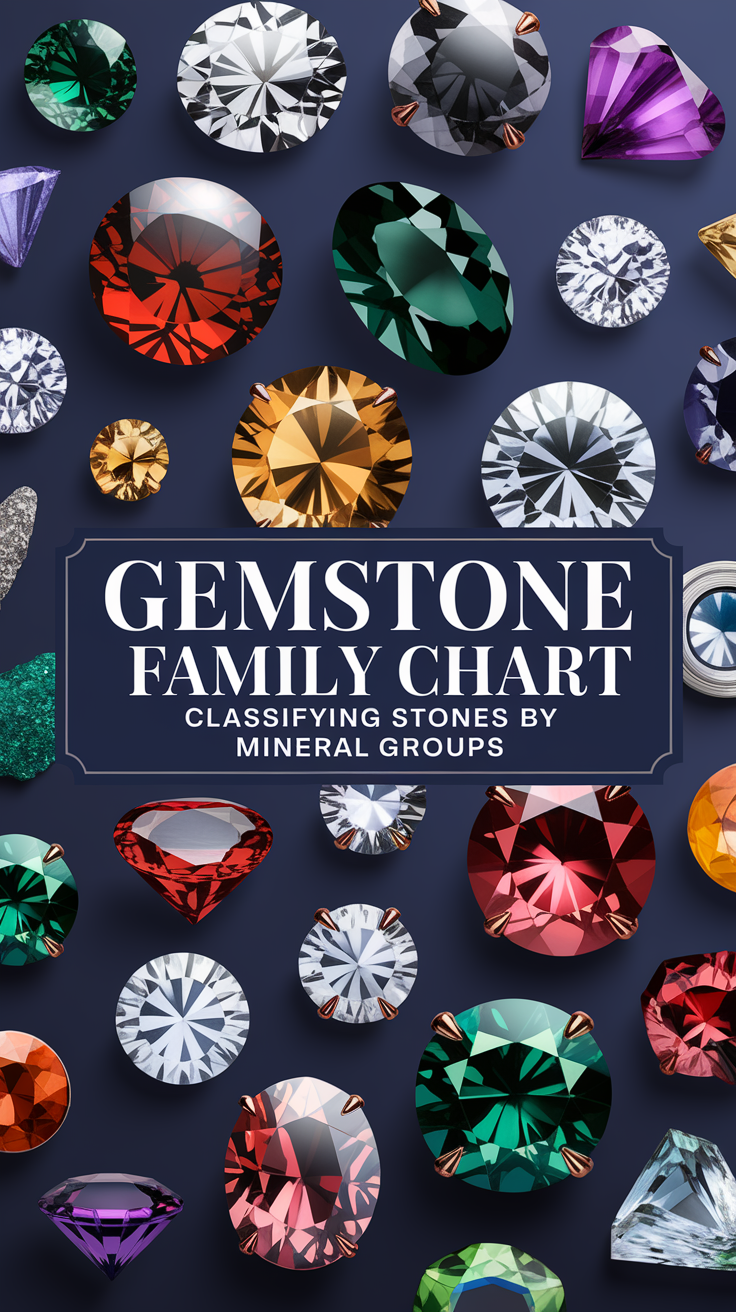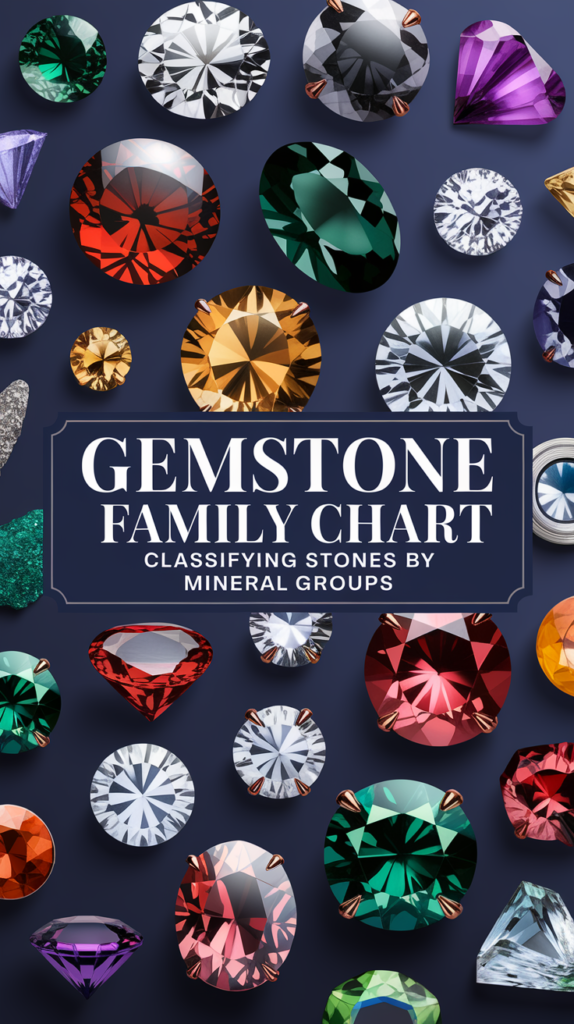
Understanding the Importance of Gemstone Family Classification
The gemstone family chart is a fundamental tool in gemology that helps us understand the relationships between different precious and semi-precious stones. By organizing gems according to their chemical composition and crystal structure, we can better predict their properties, care requirements, and potential uses in jewelry and other applications.
Before diving into specific families, let’s understand why classification matters:
- Helps identify similar properties and characteristics
- Predicts durability and care requirements
- Assists in gem identification
- Guides proper handling and treatment methods
- Provides insights into gem formation and sources
1. The Silicate Family: The Largest Gemstone Group
The silicate family represents the largest and most diverse group in the gemstone family chart, accounting for approximately 90% of Earth’s crust minerals. These gems are characterized by their silicon-oxygen molecular structure.
| Subgroup | Notable Examples | Chemical Structure |
|---|---|---|
| Nesosilicates | Garnet, Topaz, Olivine | Isolated SiO4 tetrahedra |
| Cyclosilicates | Beryl (Emerald, Aquamarine) | Ring structures |
| Inosilicates | Jade, Spodumene | Chain structures |
- Common characteristics of silicates:
- Generally high hardness (6.5-8 on Mohs scale)
- Good durability for jewelry
- Wide range of colors available
- Complex crystal structures
Pro tip: When working with silicate gems, always note that despite their general durability, some may have perfect cleavage planes that require careful handling during setting and cleaning.
2. The Oxide Family: Nature’s Toughest Gems
Oxide minerals form when metals combine with oxygen, creating some of the most valuable and durable gemstones in the gemstone family chart. This group includes corundum (rubies and sapphires) and the quartz family.
- Key members include:
- Corundum (Al2O3): Ruby and Sapphire
- Spinel (MgAl2O4)
- Chrysoberyl (BeAl2O4)
- Quartz (SiO2)
The oxide family typically exhibits superior hardness and excellent optical properties, making them ideal for everyday wear jewelry.
Pro tip: Many oxide gems can withstand ultrasonic cleaning, but always check for inclusions or treatments before using aggressive cleaning methods.
3. The Carbonate Family: Delicate Beauties
Carbonate gems are characterized by their chemical bonding with CO3 groups. These stones require special care due to their relative softness and sensitivity to acids.
- Notable members:
- Pearl (CaCO3)
- Malachite
- Azurite
- Rhodochrosite
Understanding carbonate gems’ properties is crucial for proper care and maintenance, as they’re more susceptible to environmental damage than other families.
Pro tip: Never use acid-based cleaners on carbonate gems, and avoid prolonged exposure to water or perspiration.
4. The Sulfide Family: Metallic Brilliance
Sulfide gems, though less common in jewelry, offer unique metallic lusters and interesting optical effects. These gems form when sulfur combines with various metals.
- Key characteristics:
- Metallic or sub-metallic luster
- Often opaque
- Variable hardness
- Distinctive colors
Pro tip: Store sulfide gems separately as they can be sensitive to environmental conditions and may tarnish over time.
5. Organic Gems: Nature’s Artistry
While not technically minerals, organic gems hold a special place in the gemstone family chart. These materials are produced by living organisms and possess unique characteristics.
- Common organic gems:
- Amber (fossilized tree resin)
- Coral
- Jet
- Pearl (biogenic carbonate)
Pro tip: Organic gems are particularly sensitive to heat and chemicals; always use the gentlest cleaning methods possible.
6. Native Elements: Pure and Precious
Native elements represent gems that occur in nature in their pure form, without combining with other elements. This unique gemstone family chart category includes some of the most valuable materials known to man.
- Examples include:
- Diamond (pure carbon)
- Gold
- Silver
- Copper
Pro tip: Despite their purity, native elements can still require specific care – even diamonds can be damaged if struck at the right angle.
Key Takeaways
- Understanding gemstone families helps predict behavior and properties
- Chemical composition determines family grouping
- Each family requires specific care considerations
- Crystal structure influences gem characteristics
- Family classification aids in identification and valuation
Conclusion
The gemstone family chart serves as an essential framework for understanding the relationships between different gems and their properties. Whether you’re a collector, jeweler, or enthusiast, this classification system provides valuable insights into gem identification, care, and use.
Frequently Asked Questions
What is the most common gemstone family?
The silicate family is the most common, comprising about 90% of Earth’s crust minerals and including popular gems like garnets, emeralds, and topaz.
How are gemstone families determined?
Gemstone families are determined primarily by their chemical composition and crystal structure, which define their fundamental properties and characteristics.
Can gemstones belong to multiple families?
No, gemstones have specific chemical compositions that place them in one primary family, though they may share characteristics with other families.
Why is family classification important?
Classification helps predict properties, determine proper care methods, and understand the formation and value of gemstones.
How does hardness relate to gemstone families?
Gemstones within the same family often have similar hardness ranges due to their shared chemical composition and crystal structure.


